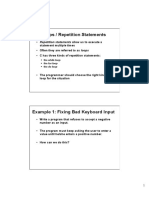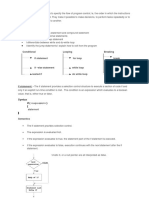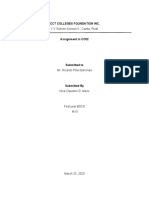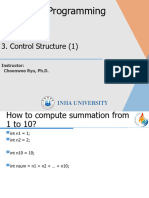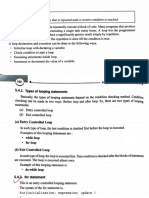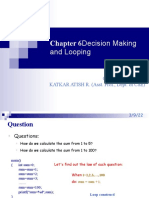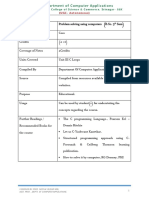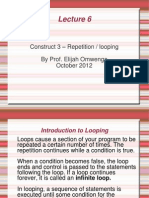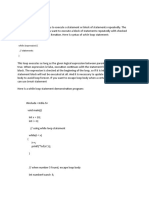0% found this document useful (0 votes)
26 views4 pagesLoop Control Statements
The document discusses various loop control statements in C/C++ like while, do-while, for loops and their syntax. It also covers continue and break statements used to control loop flow. Increment and decrement operators are defined. Sample programs demonstrate the use of these statements to print numbers in a range or calculate sums.
Uploaded by
Yoda Reyes NakajimaCopyright
© © All Rights Reserved
We take content rights seriously. If you suspect this is your content, claim it here.
Available Formats
Download as PDF, TXT or read online on Scribd
0% found this document useful (0 votes)
26 views4 pagesLoop Control Statements
The document discusses various loop control statements in C/C++ like while, do-while, for loops and their syntax. It also covers continue and break statements used to control loop flow. Increment and decrement operators are defined. Sample programs demonstrate the use of these statements to print numbers in a range or calculate sums.
Uploaded by
Yoda Reyes NakajimaCopyright
© © All Rights Reserved
We take content rights seriously. If you suspect this is your content, claim it here.
Available Formats
Download as PDF, TXT or read online on Scribd
/ 4









